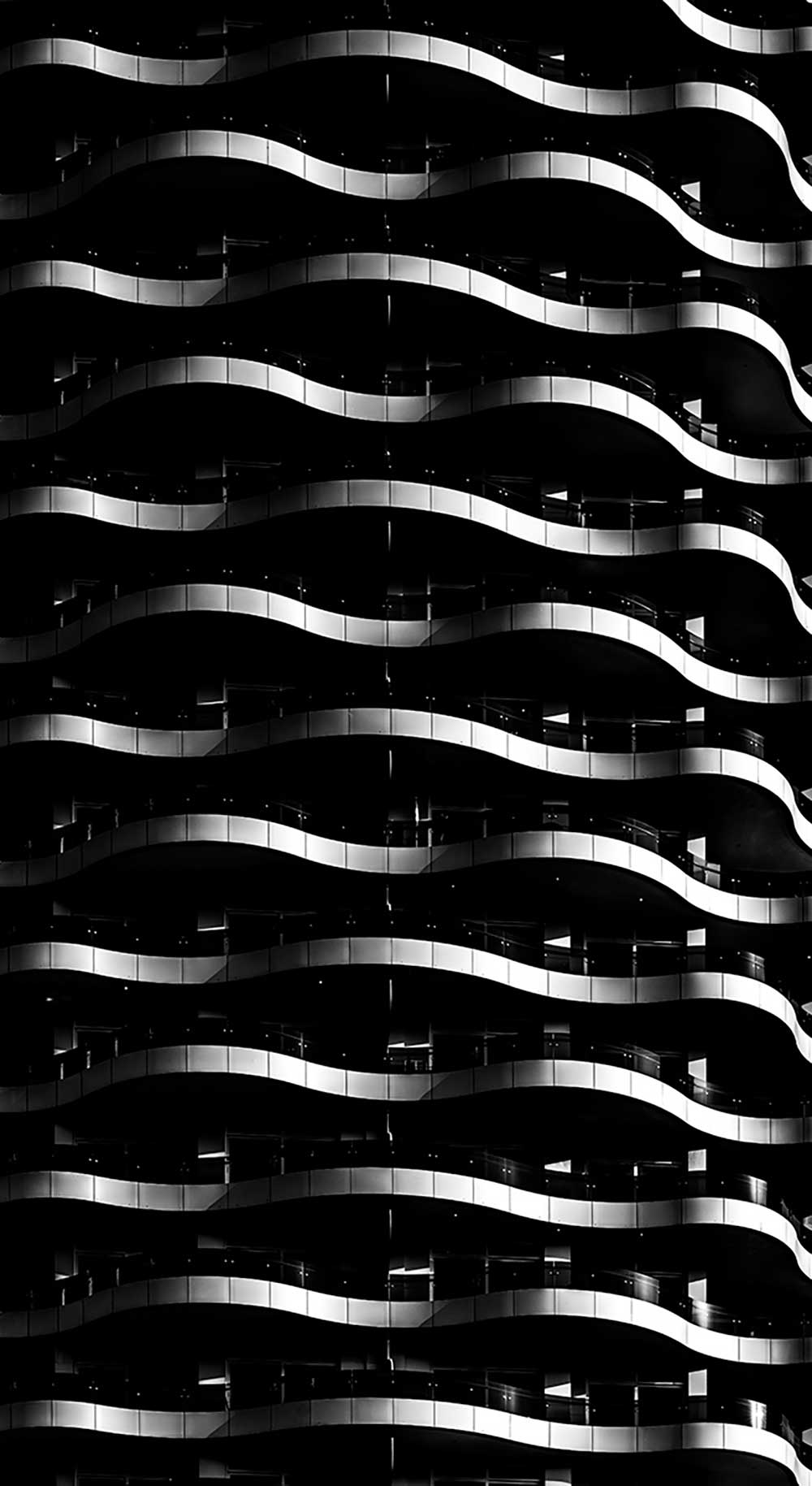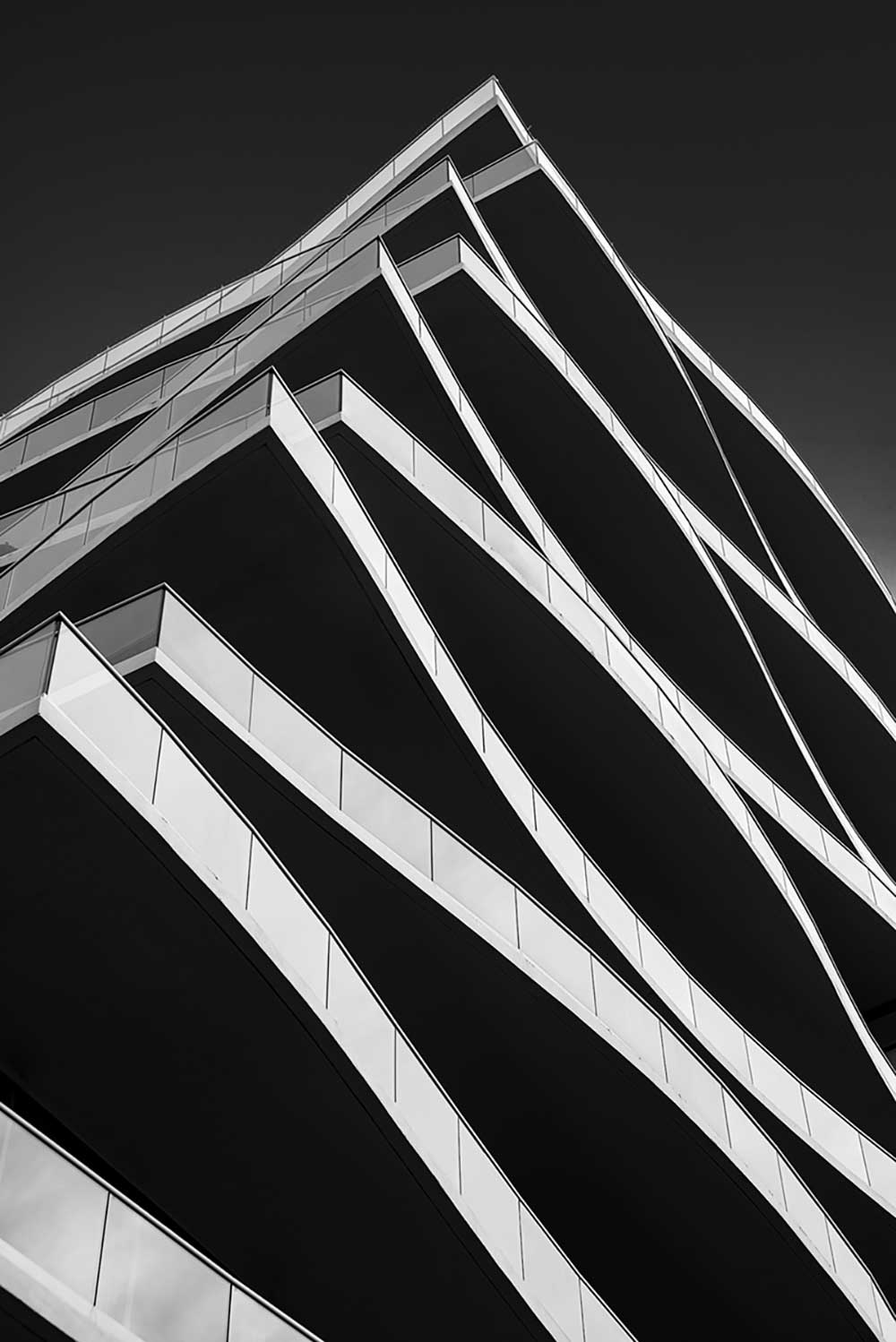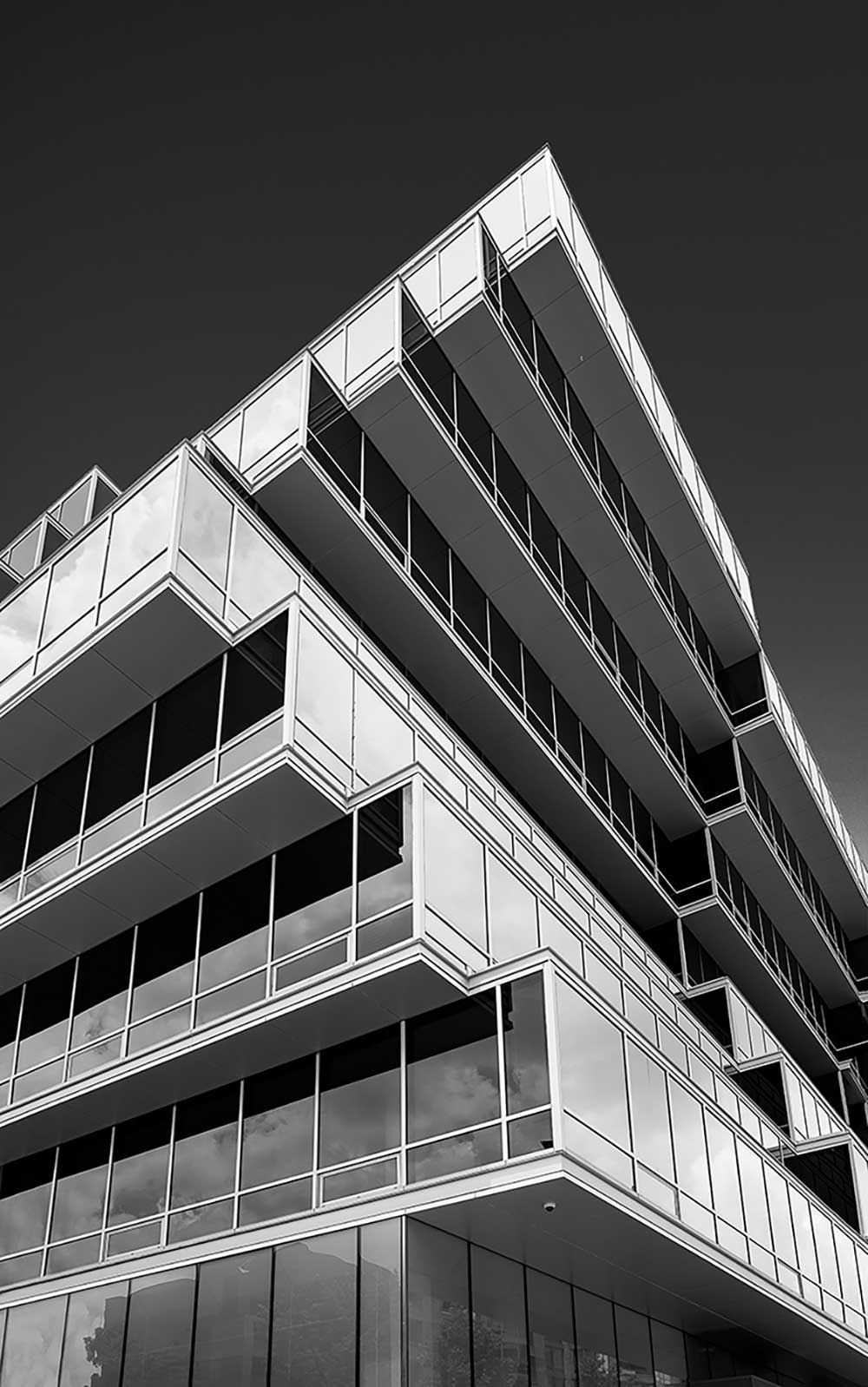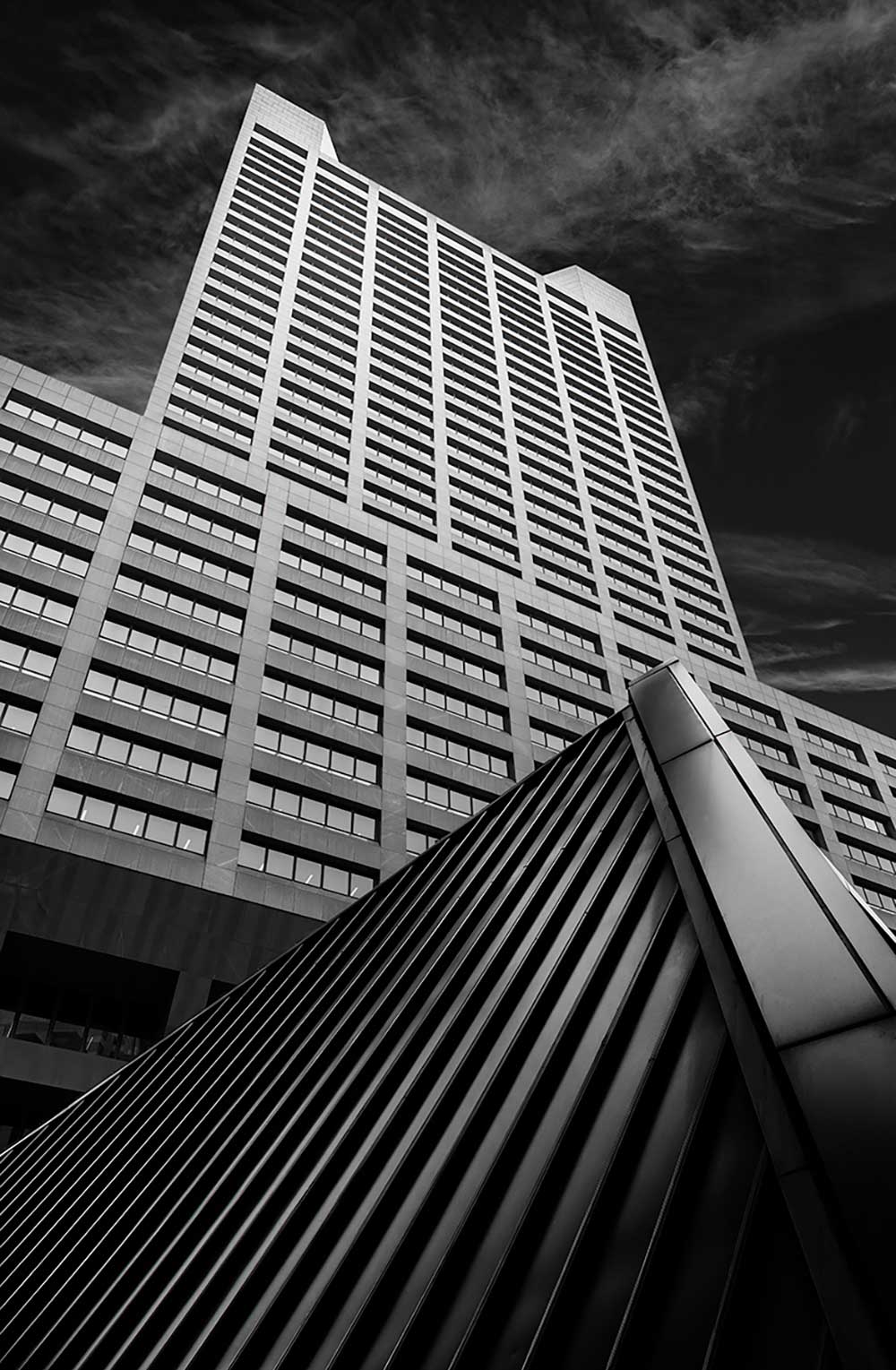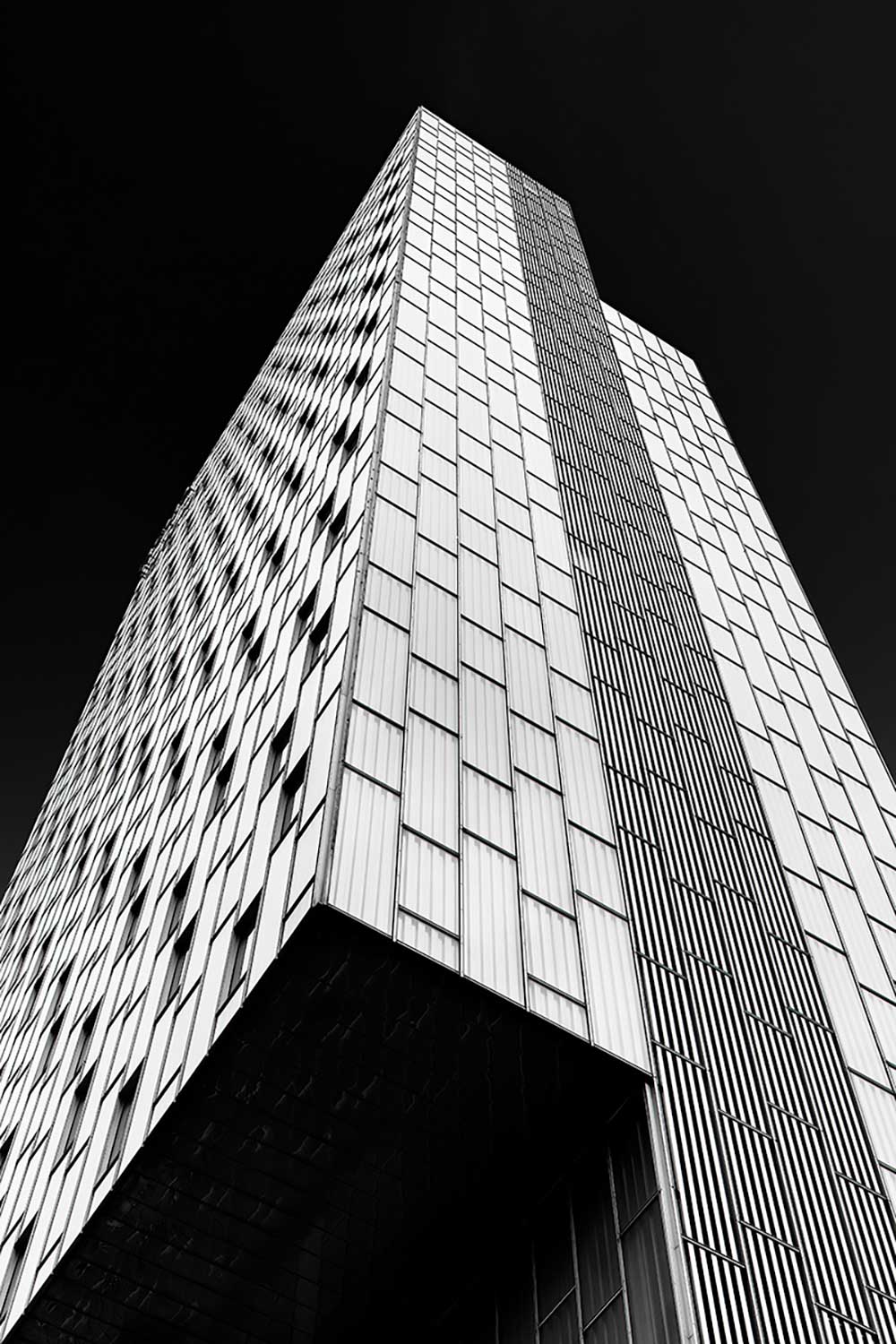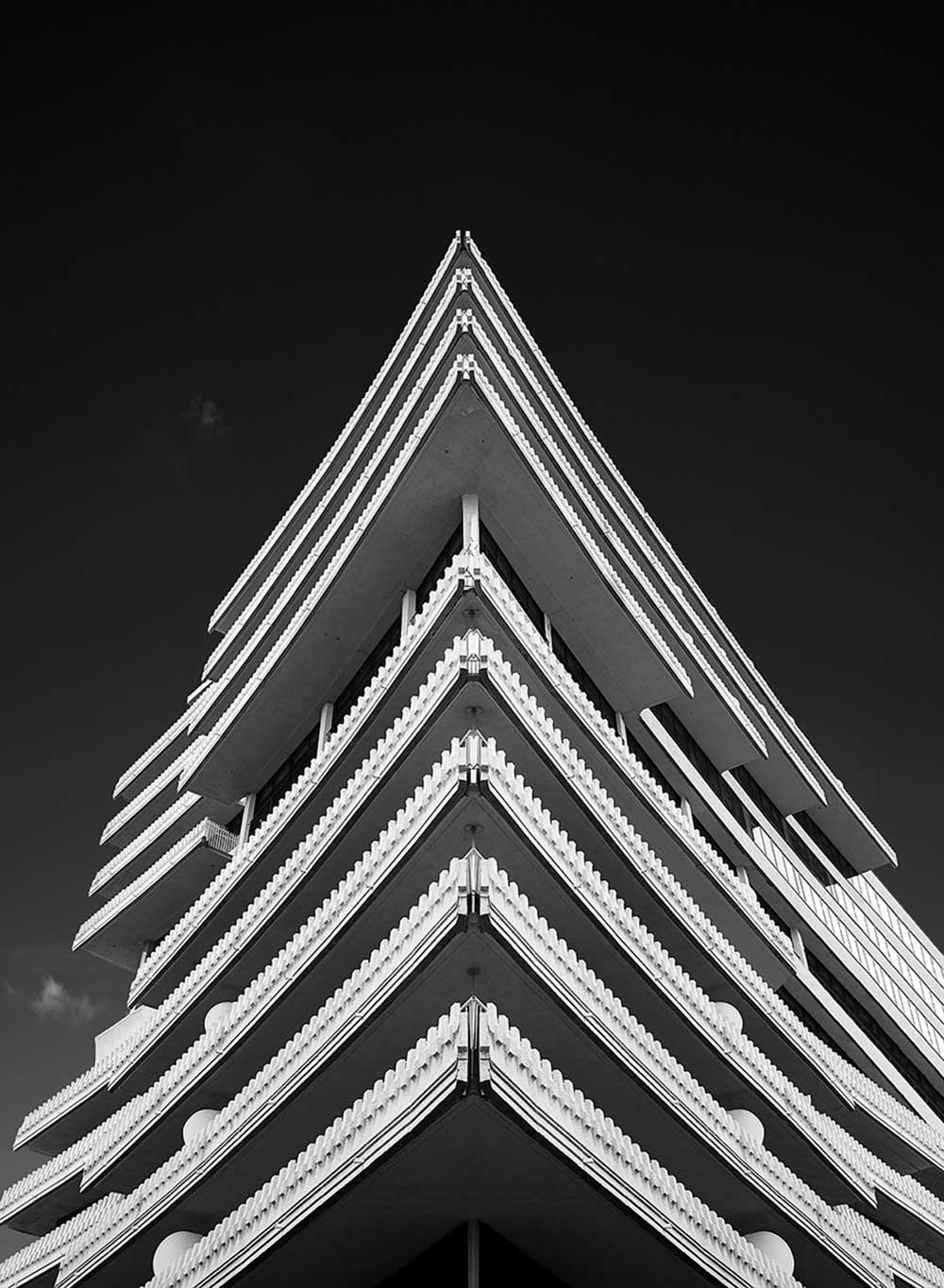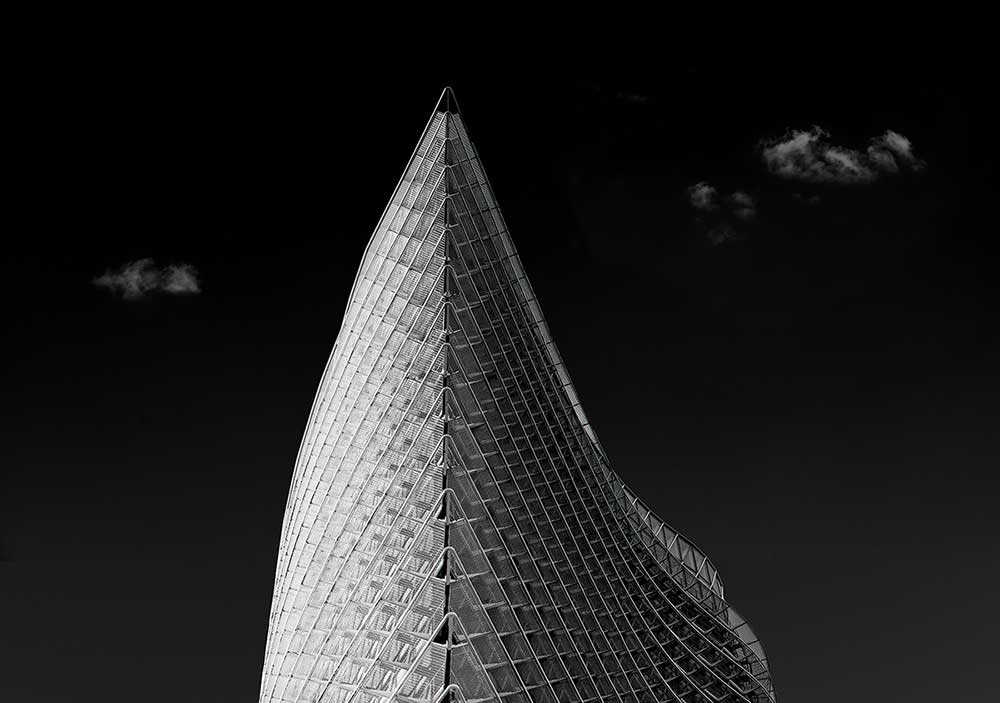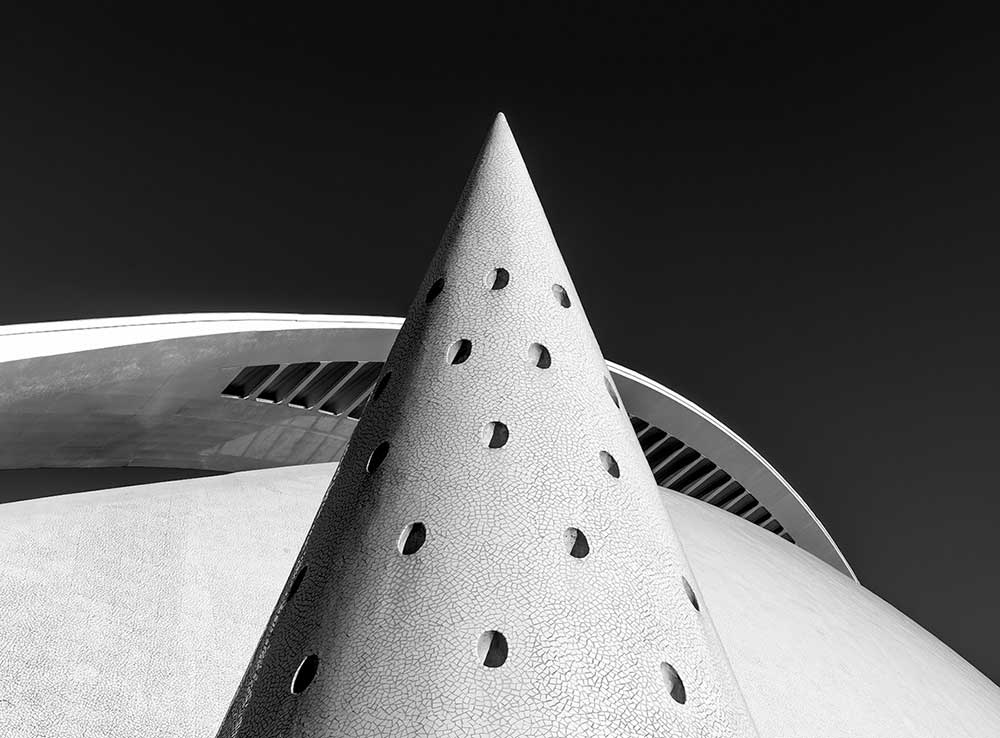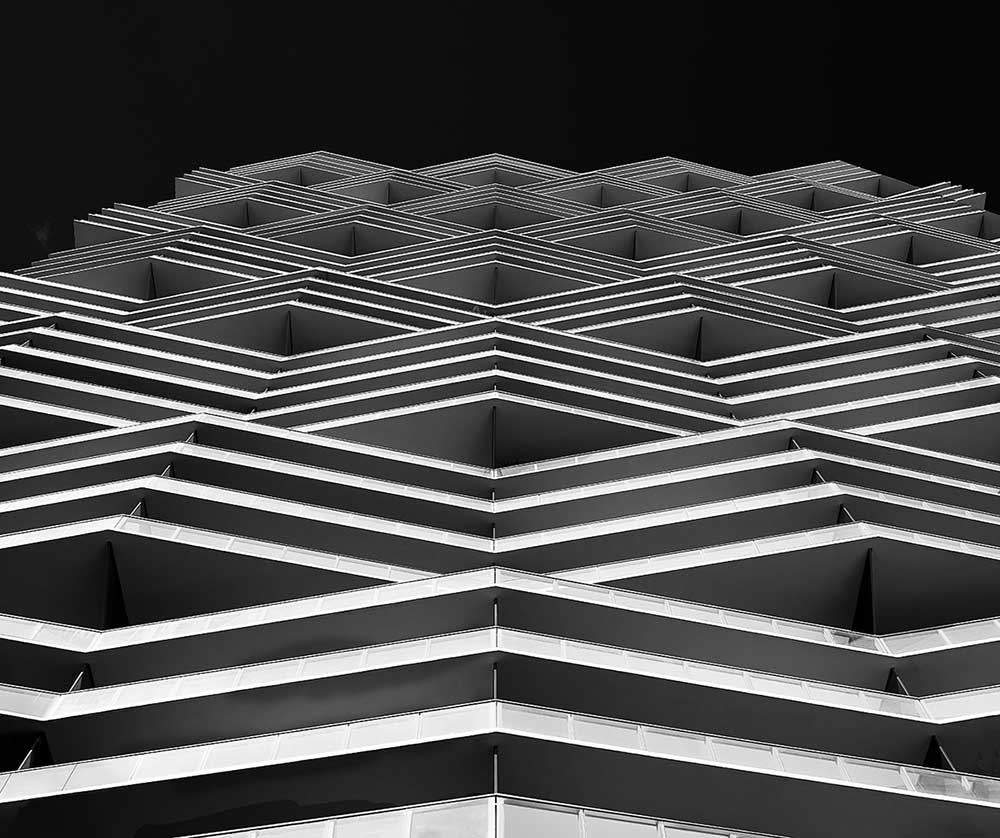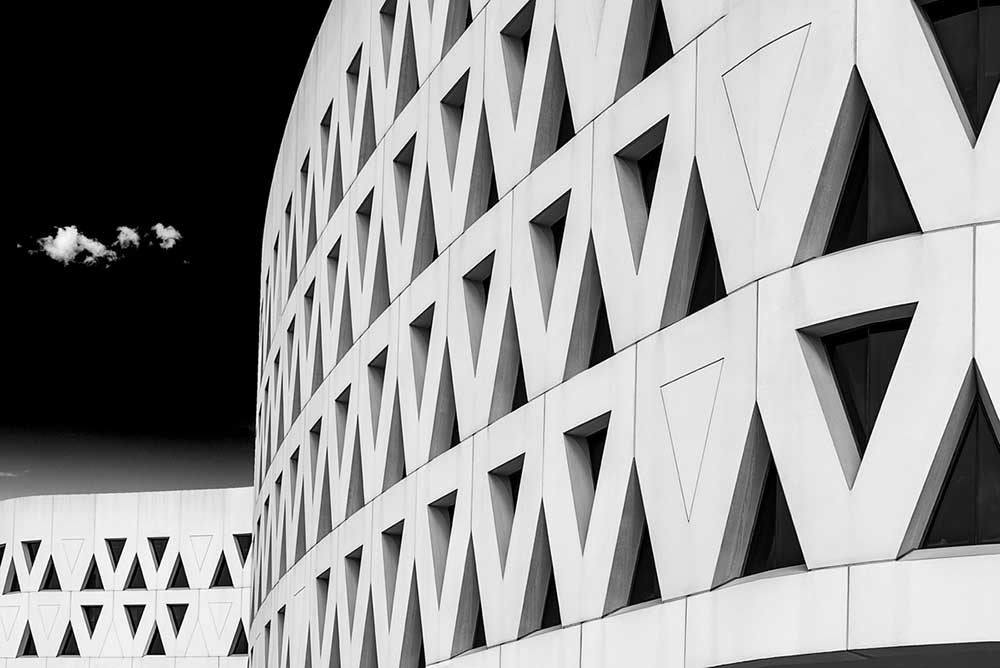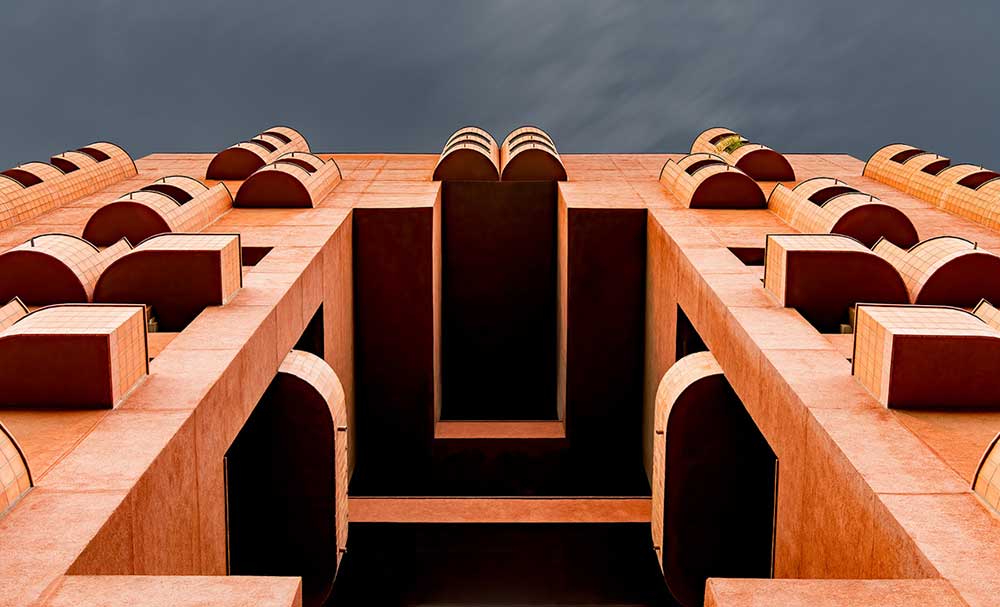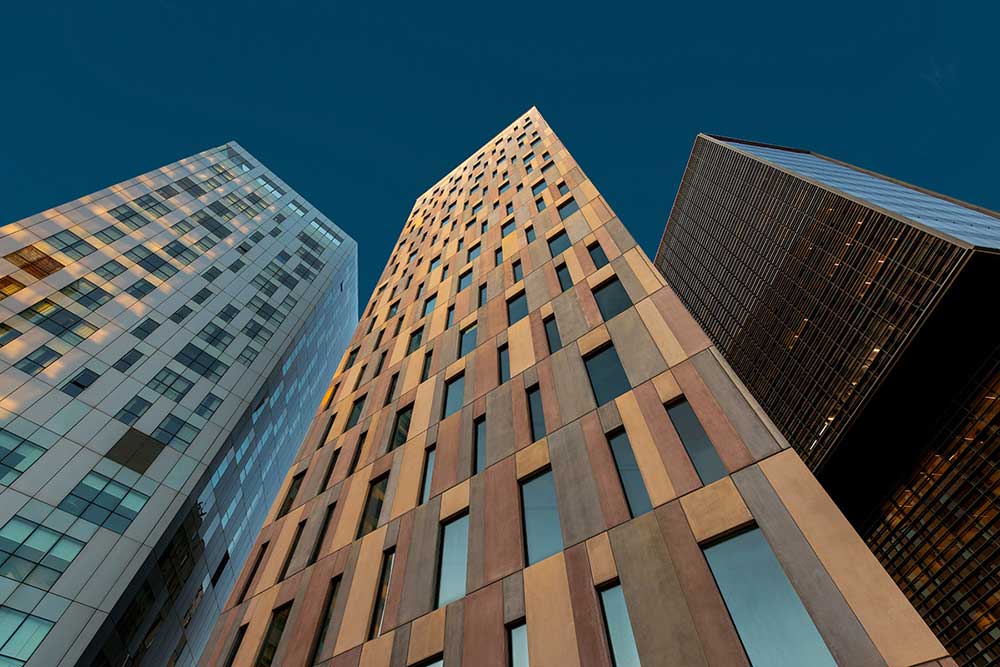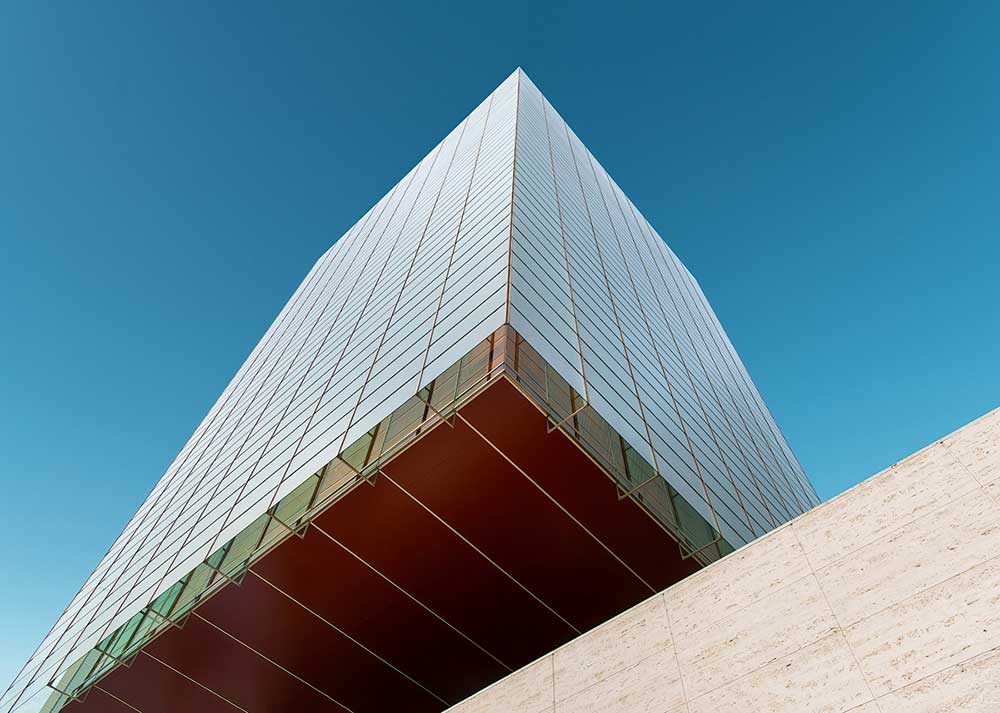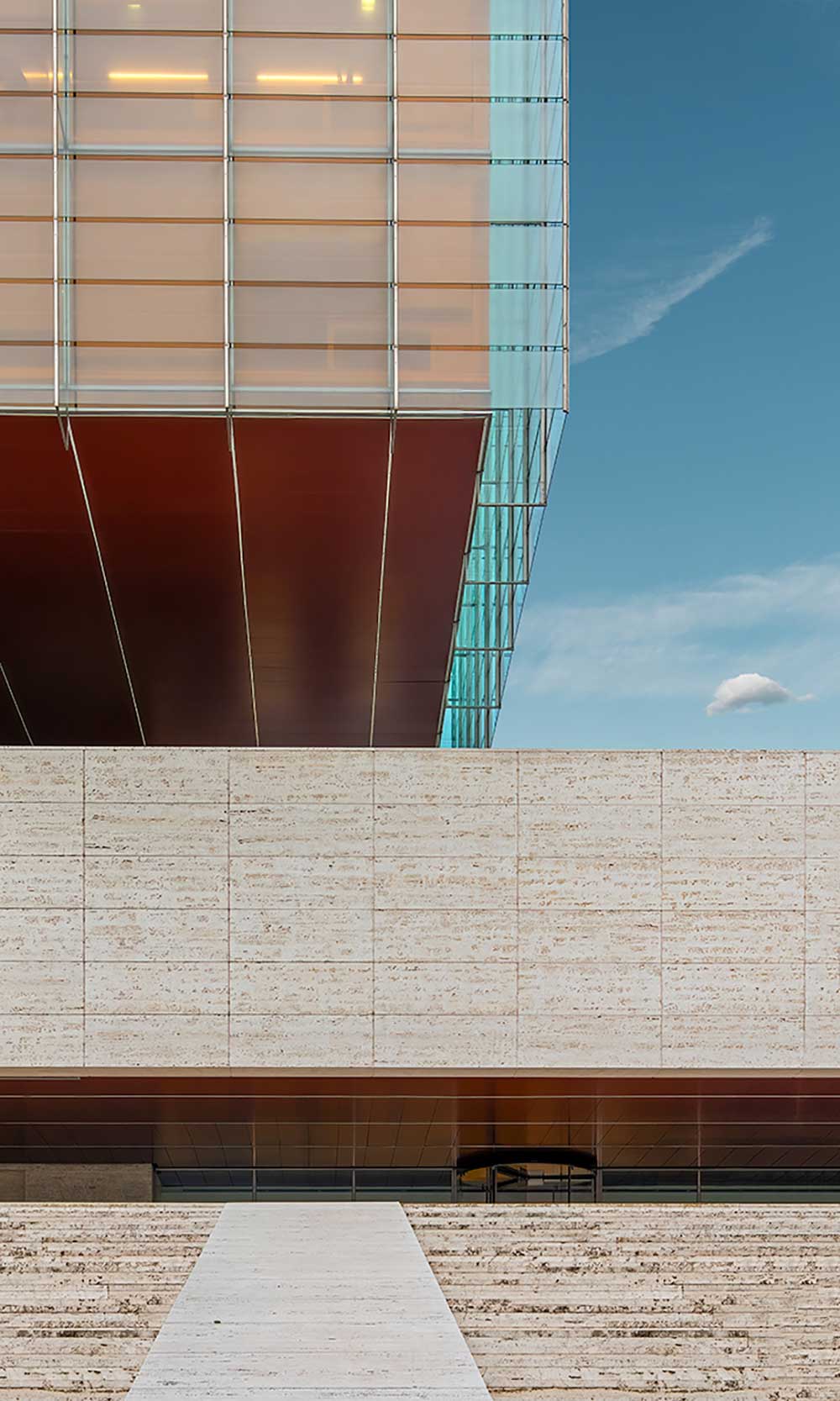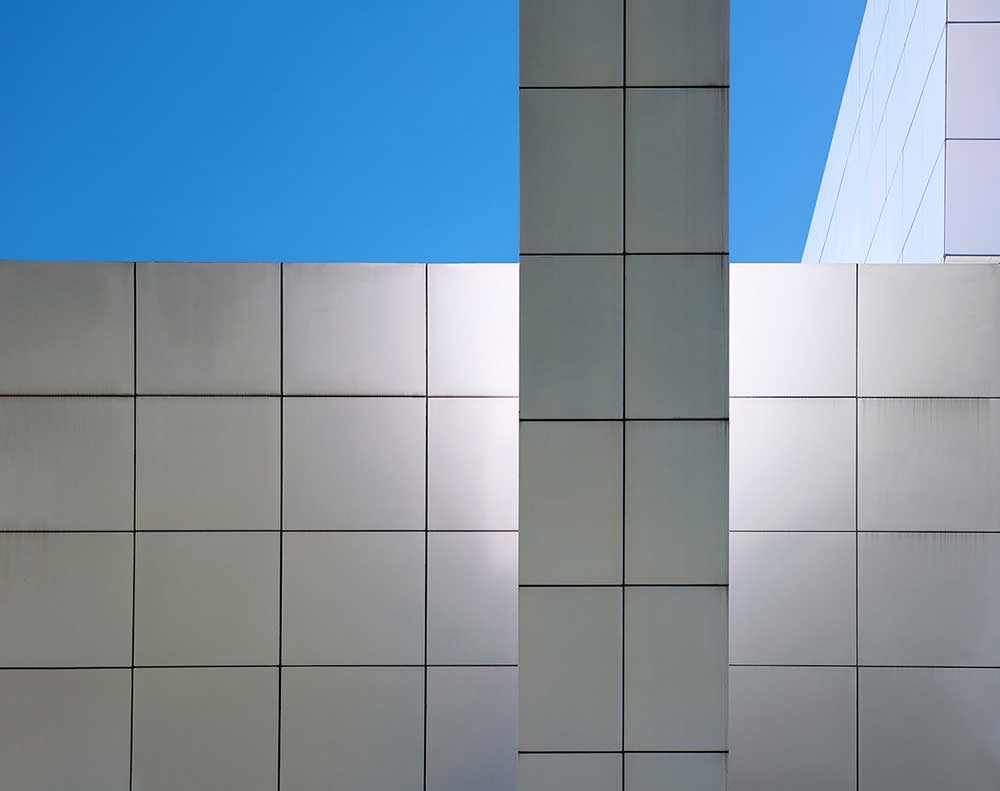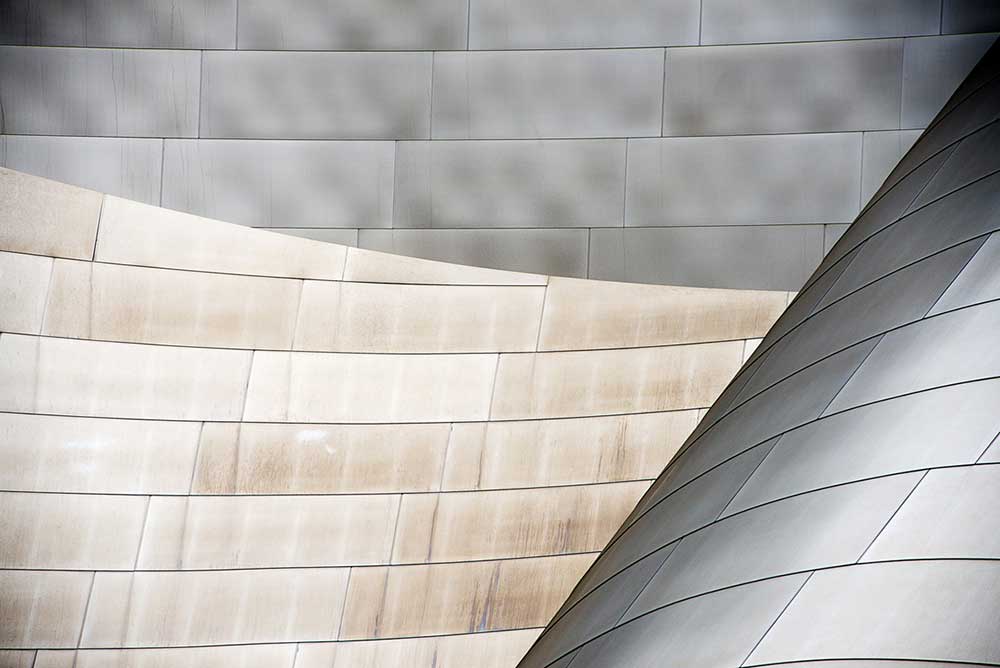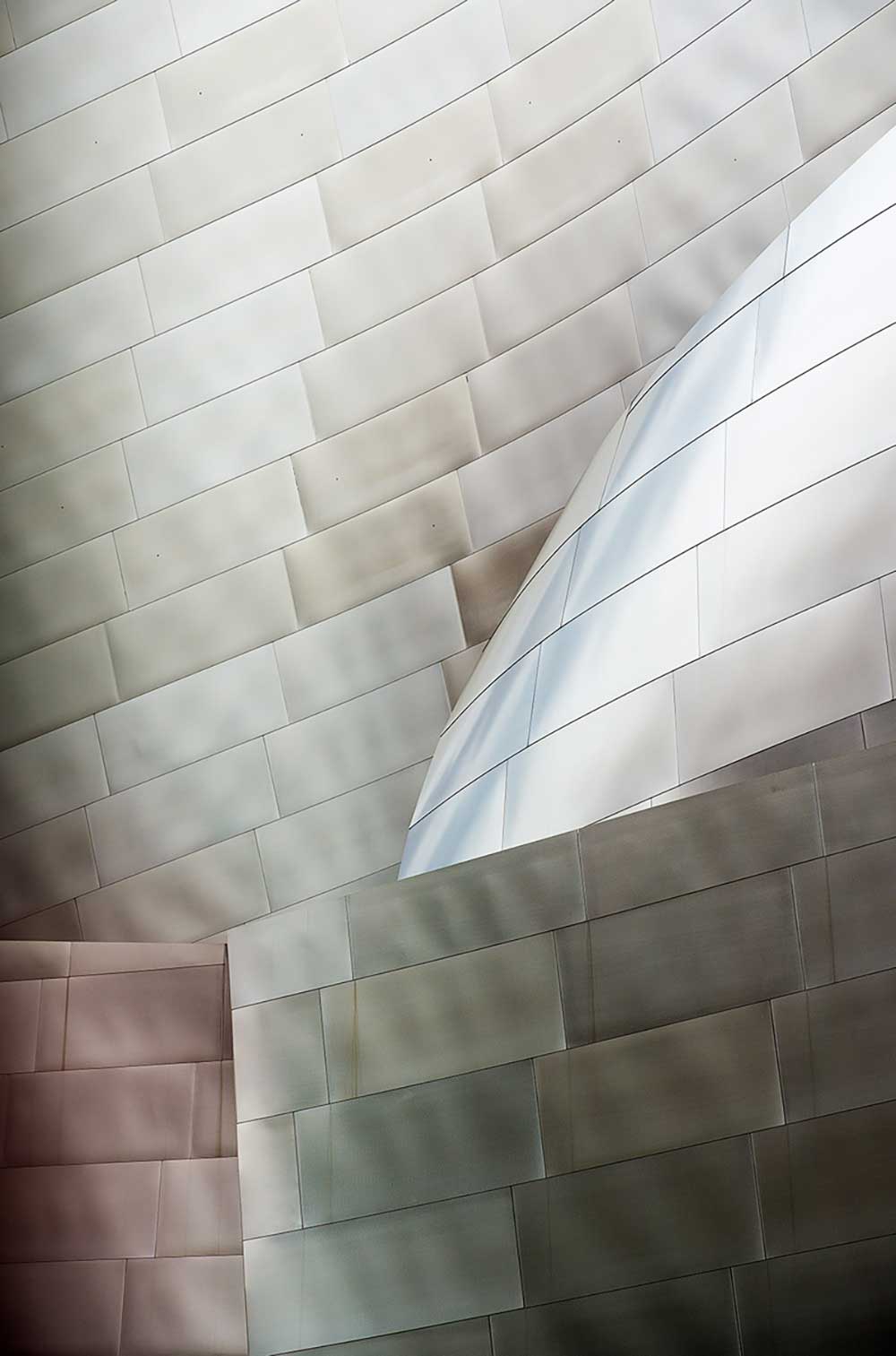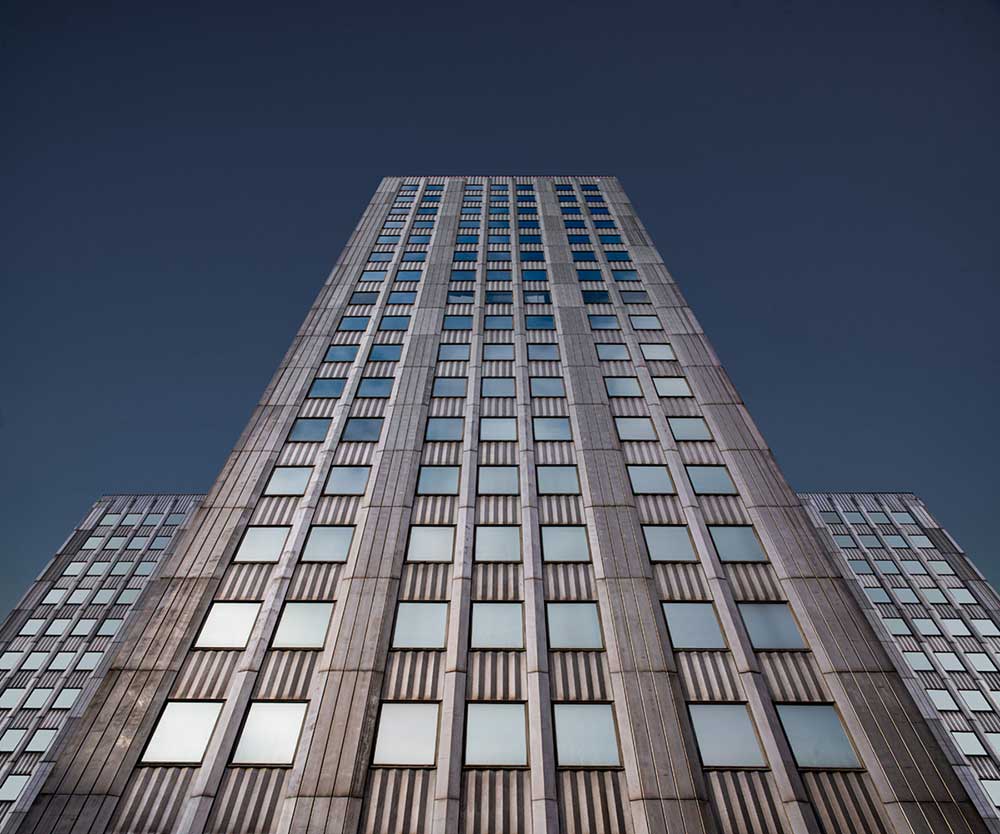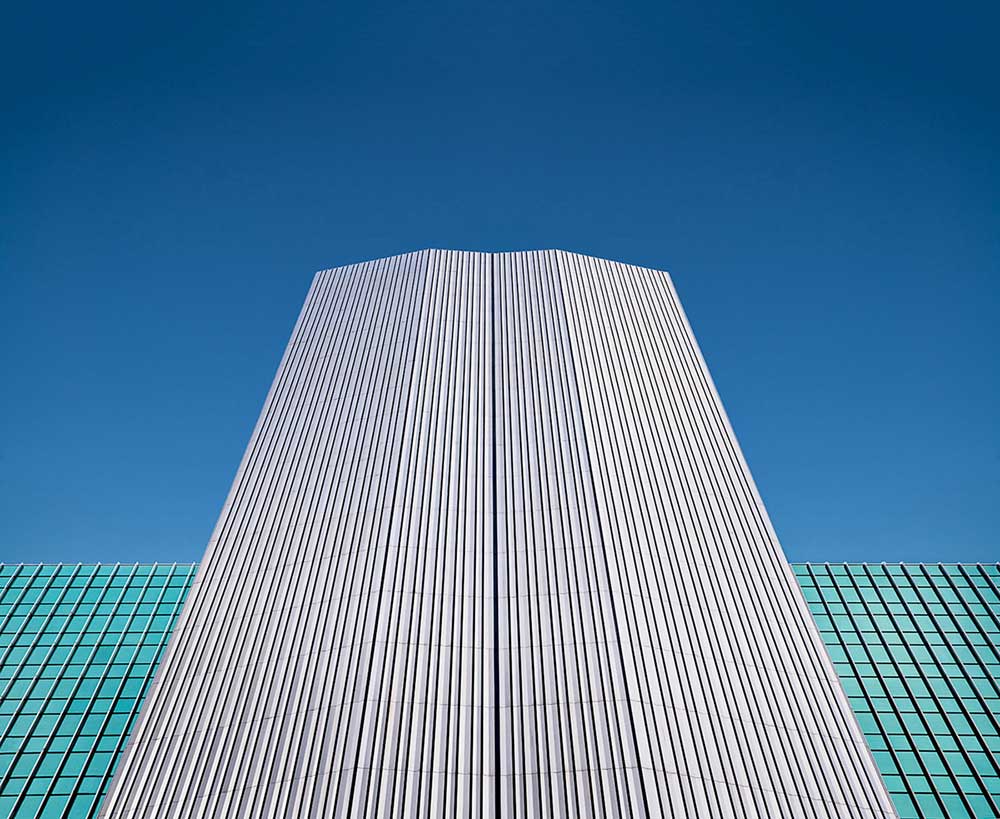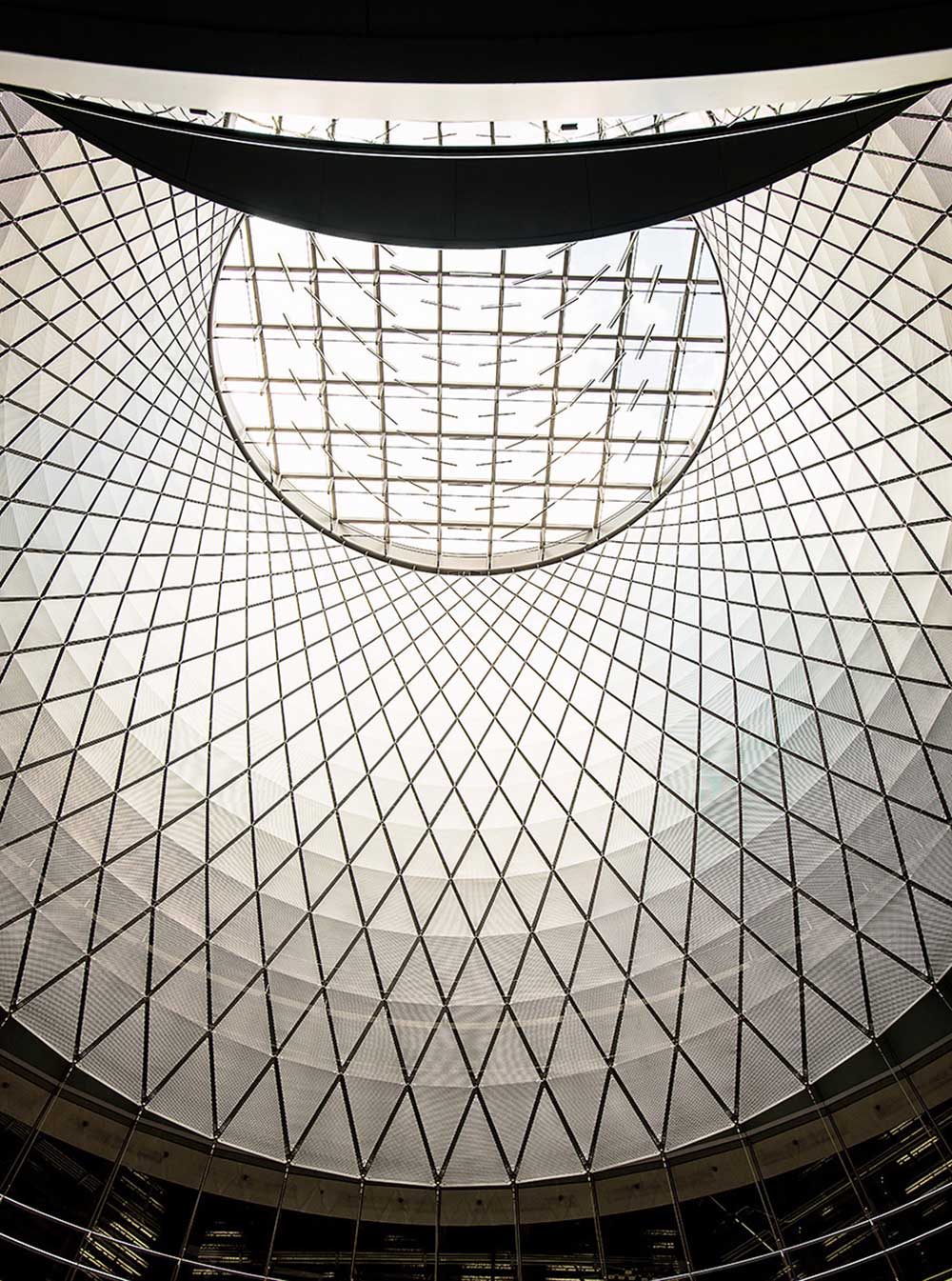Composition. It’s an inherent and integral aspect of the two-dimensional arts. In most art forms, composition is created by the artist. In photography, limited to using the visible world as its palette, 1 that composition must be discovered.
The joy of that discovery, of finding beauty in juxtaposition within the frame, is what drives me as an artist. The realization that beauty can be found anywhere, given the right frame and composition, is a constant source of wonder. Beauty is there, waiting to be discovered. These images revel in composition. Light and line, shape and shadow, tone and texture, and color or the lack of it, all aligned within the frame to form a controlled organization of elements. The visual balance and harmony of elements provide a tranquil form on which to rest the eye.
My interest and my eye have always been drawn to architecture; the clean lines and graphic elements of modernist and post-modernist, in particular. My process begins with the close examination of the subject, seeking interesting compositions of line, light, and texture. The scale ranges from vignettes of small aspects of a structure, to the entire edifice. Utilizing digital capture, the images are then meticulously reworked in Photoshop to emphasize the compositional elements and remove distractions, while leaving intact the original composition. The end result is to reveal to the viewer the often overlooked beauty of the built environment that permeates our lives.
Precisionism
When I first saw the work of Charles Sheeler, I was immediately drawn to it. His work in the years between the world wars celebrated the ascendance of the machine age, depicting and idealizing the industrial landscape. He and a small, informal group of painters and photographers sought to represent, emulate, and celebrate the exactitude required of the machine age.
Deemed Precisionists, they made no attempt at social commentary and generally included no people or signs of human presence. Rather they reveled in the utilitarian design of the machine age, reducing their subject to graphic elements and finding beauty in composition. Subjects were portrayed with a sense of simple perfection, clean in line, plane, and light, showing no sign of wear or aging. They sought to portray the objective beauty of the modern world.
Neo-Precisionism
Now, as an artist working in the digital age, the time is ripe for a new Precisionism, for Neo-Presicionism. Digital capture has enabled the recording of a level of detail and a range of light unattainable with film. And digital processing affords a level of control over the presentation of the image as never before; images can be ‘pixel-perfect’. Precision is an inherent quality of digital capture; digital processing can allow us to over-look that precision, to obscure it, or to embrace it. Neo-Precisionism embraces it. I consider this work to be Neo-Precisionist. This work makes no attempt at social commentary or to make any statement about human interaction with their environment. Rather, it encourages human interaction with their environment; it seeks to demonstrate the beauty to be found around us if we choose to look. Beauty is in the eyes of the seeker.
I’ve spent many years developing and refining my eye for composition. I earned a Bachelors of Fine Art in Photography from Ohio University in the US. I then worked for five years as a photo-journalist shooting every day, followed by stints at commercial, corporate, industrial, architectural, editorial, documentary and portraiture. In all of the genres I worked in, I always strove for clean, controlled composition and lighting. In creating hundreds-of-thousands of images in nearly every kind of environment, I learned that good composition makes or breaks an image, and that the elements of good composition can be found anywhere. These images testify to that.



